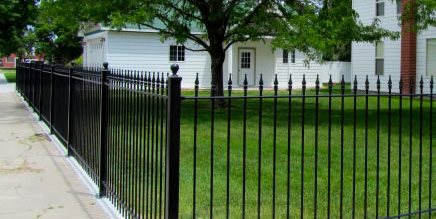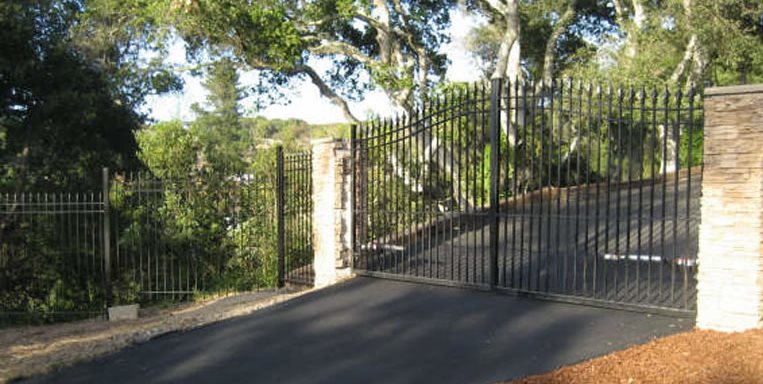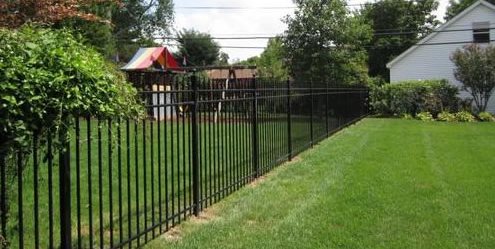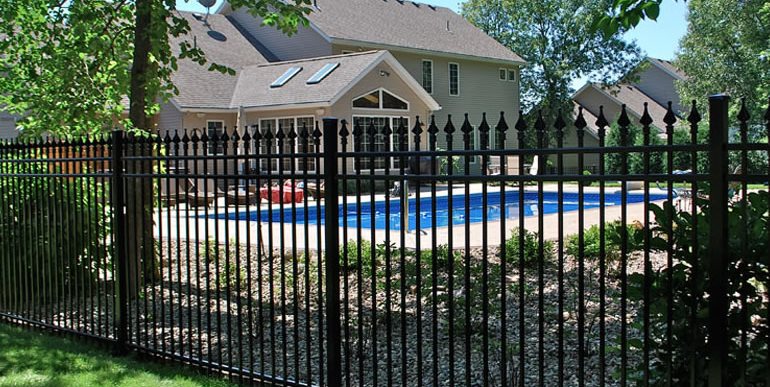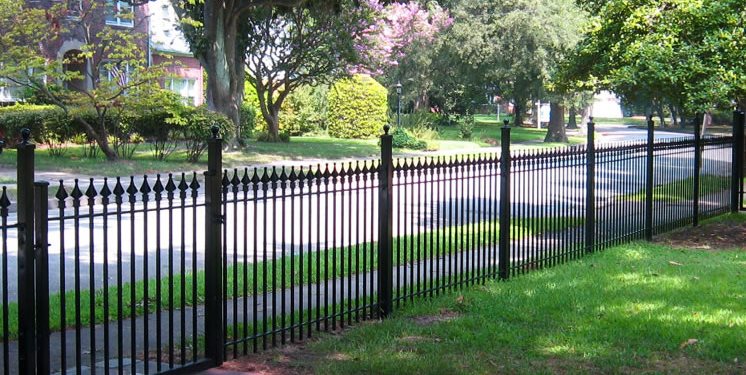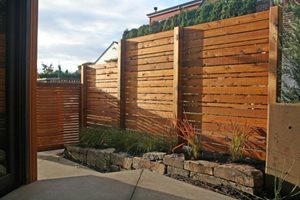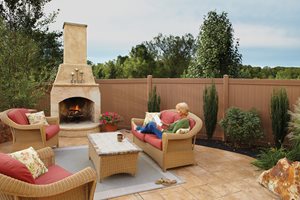Wrought Iron Fencing
Pros, cons & professional design ideas for wrought iron fencesThe 19th century Industrial Revolution gave birth to the wrought iron fence in America. Earlier, the cost of iron and the labor to hand forge fences made this a rare option for colonial homes. But as the diversity of design expanded and costs were lowered due to factory production, these fences became an important part of the home. In fact, during Victorian times, personal wealth was displayed with increasingly more elaborate wrought or cast iron fences enclosing the front yard. To this day, such elaborate work is the signature of cities like New Orleans.
The historic and timeless presence of wrought iron fences makes them a popular choice to this day. Designs have been simplified and the manufacturing process has yielded a more affordable, lasting product using tubular stock. Sure, there are still a few traditional iron workers hand making solid stock fences today, but at $500 per linear foot, this old method is dying out.
You May Also Like:
-
Colonial Landscaping - Design ideas for landscaping Colonial-style homes
-
Traditional Landscape Design - Design ideas for creating your own traditional garden
Josh Manley, owner and founder of The Iron Shop of Cuyahoga Falls, Ohio, manufactures and installs contemporary iron fences. "Most fencing today is manufactured with modern steel which is better than cast and is much more flexible. We produce a solid iron picket, as well as tubular pickets. About 99% of the fencing out there is tubular, made in both aluminum and iron. That's our standard product because it fits our customers' price points, adapts to every application and is by far the best mix of price and quality. We still offer a solid picket Signature series for a more historic look, but it weighs upwards of 400 pounds per span. It's hard to install and much more expensive."
One of the big differences is in the finials that top each picket. These are what give wrought iron its traditional character. "Other companies use a pinched stamped finial for higher profit and quicker output. We go a step further than others, by taking cast iron finials and welding them to each of our pickets. We sand cast both in iron and aluminum and we're the only ones doing this on a production basis. I designed this product to fit the gap between hand forged and modern interpretation to offer a middle affordable old world look at a much more competitive price point."
Pros:
- Durable and strong
- Many styles and designs available
- Highly decorative/ornamental
- Good security - hard to climb, cut or knock down
- Good visibility - doesn't block views
Cons:
- Rusts
- Requires considerable maintenance
- Expensive
- Provides little privacy
- Installation must be precise
Iron vs Aluminum
Manly explains the difference between his iron and aluminum fencing options. "Iron is the traditional product due to its strength because it is welded together. The downside is that if the powder coating is scratched, the newly exposed iron will rust if not immediately repaired. Aluminum won't rust if scratched so it's considered the maintenance free choice, but it is not as strong and more easily damaged. Our aluminum fences are not welded, but bolted together, which allows more variation in how they're assembled on site. This allows you to follow the land form with the fence whereas with iron, you must step down in increments to follow a slope."
Today, about 85% of the fences sold by The Iron Shop are black in color. "We can respond to customers' needs more quickly when they use this color because we keep all our material in stock. For colors, the fence must be sent out in advance for custom powder coating, which can take weeks. Only about 3% of our work is custom colored and it is all for commercial projects."
The Iron Shop strives to standardize their prices. "Aluminum costs us more but we charge the same as iron to make it easier for our customers to choose. Our margin is less on aluminum, but we prefer to keep costs the same for both products."
- Residential grade at 6' high runs $22 a linear foot for materials with an additional $5 to $10 per linear foot for installation
- Residential grade at 3' high runs $14 per linear foot with similar installation charges
- Commercial grade fences are 50% larger, 2% thicker and the overall weight doubles
Installation Options
There has been a significant change in the wrought iron fence market over the past decade. During the period between 2004 to 2006, there was a much stronger do-it-yourself trend and customers were buying fencing on credit. The current trend is more established customers with long term residences who want a lasting investment that suits their individual needs. "These customers today are much slower to make decisions so we are working with them over many months rather than just a few days as with before," says Manly. "These more affluent customers are having contractors install their products. We ship a lot of fencing to these projects all over the U.S. where local contractors do the installation."
"Our fences are very simple construction and remain an easy choice for homeowner do-it-yourselfers. In the beginning I thought I'd have to have a whole department for answering installation questions but we received just 10% of what was expected. It's due to our very comprehensive installation manual which makes the difference. Homeowners should remember that the benefit to DIY is that nobody will care as much about how well your fence is installed as you do."
A wrought iron fence can be installed at ground level with concrete footings, or atop a brick or stone wall. Think about matching masonry fence pillars to any masonry work on the exterior of your home for a cohesive look. For example, if your home is stucco, stucco pillars with concrete wall caps would be a good choice. While traditional black is most popular, an iron fence can be painted a variety of colors. Check with your fence manufacturer or designer for color options.

 Backyards
Backyards
 Front Yards
Front Yards
